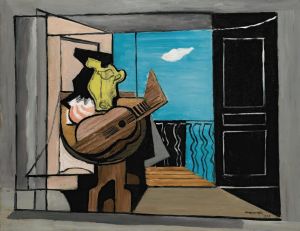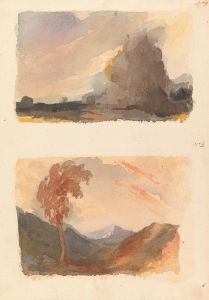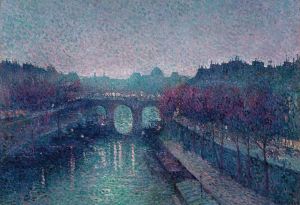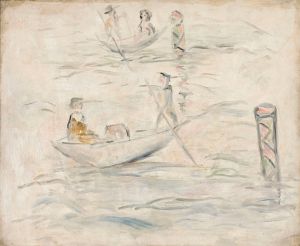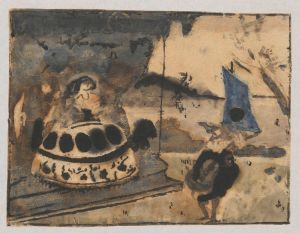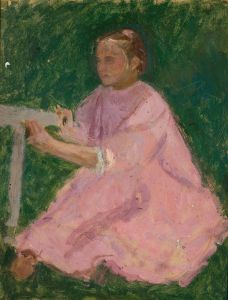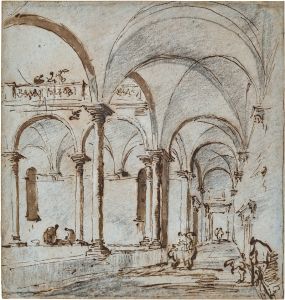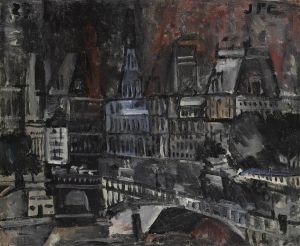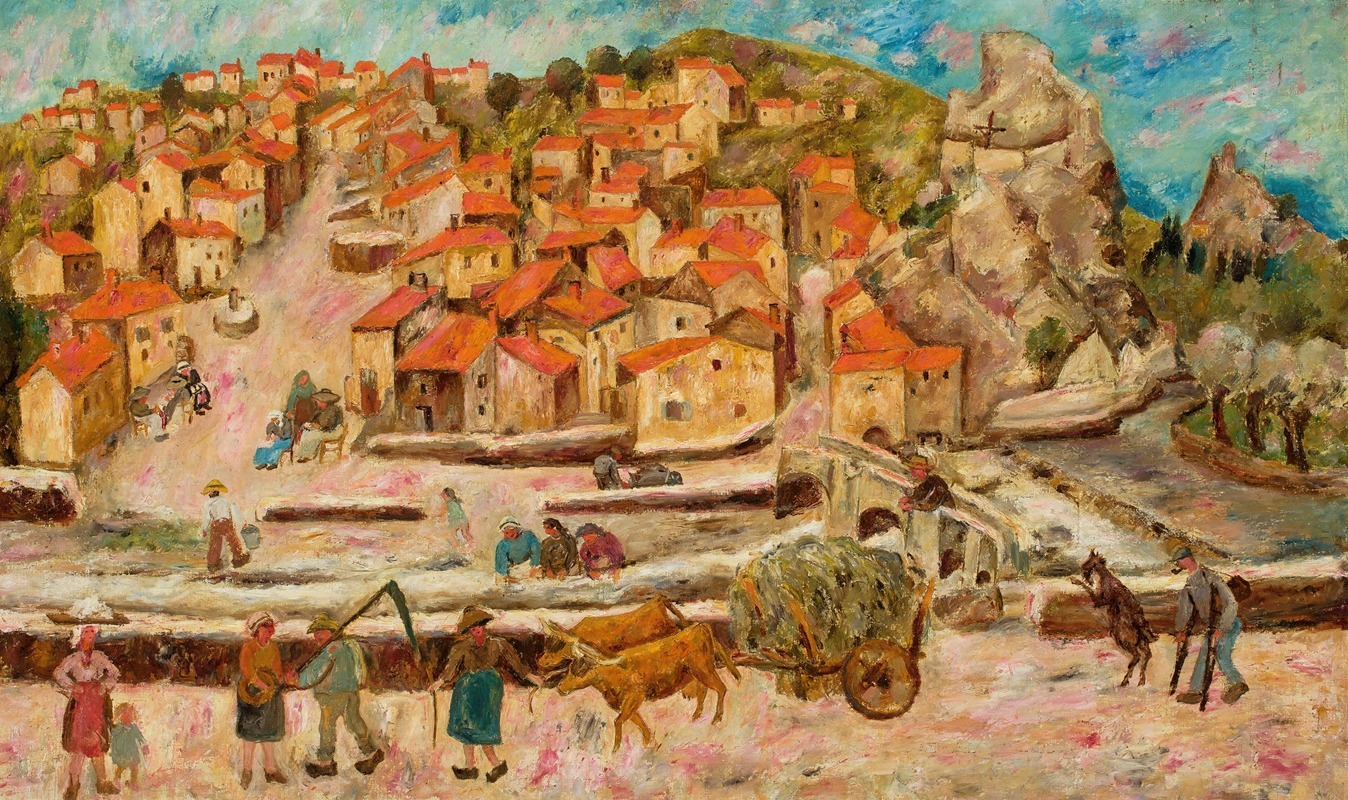
View from the bridge in Espaly
A hand-painted replica of Tadeusz Makowski’s masterpiece View from the bridge in Espaly, meticulously crafted by professional artists to capture the true essence of the original. Each piece is created with museum-quality canvas and rare mineral pigments, carefully painted by experienced artists with delicate brushstrokes and rich, layered colors to perfectly recreate the texture of the original artwork. Unlike machine-printed reproductions, this hand-painted version brings the painting to life, infused with the artist’s emotions and skill in every stroke. Whether for personal collection or home decoration, it instantly elevates the artistic atmosphere of any space.
Tadeusz Makowski (1882-1932) was a Polish painter known for his unique style that combined elements of Cubism and folk art. He spent a significant portion of his career in France, where he was influenced by the avant-garde movements of the early 20th century. One of his notable works is "View from the Bridge in Espaly," which reflects his distinctive approach to landscape painting.
"View from the Bridge in Espaly" is a painting that captures a serene and picturesque scene from the small town of Espaly-Saint-Marcel in France. This work is characterized by Makowski's use of geometric forms and a muted color palette, which are hallmarks of his style. The painting depicts a bridge, likely spanning a river or stream, with the surrounding landscape visible in the background. The composition is carefully balanced, with the bridge serving as a central focal point that draws the viewer's eye into the scene.
Makowski's technique in this painting demonstrates his ability to blend realism with abstraction. The bridge and the natural elements are rendered with a certain degree of simplification, yet they retain enough detail to be recognizable. This approach allows Makowski to convey the essence of the landscape without becoming overly literal. The use of soft, earthy tones adds to the tranquil atmosphere of the painting, evoking a sense of calm and contemplation.
The influence of Cubism is evident in the way Makowski structures the composition. The geometric shapes and the fragmented forms suggest a Cubist sensibility, although Makowski's interpretation is more subdued and less radical than that of his contemporaries like Pablo Picasso and Georges Braque. Instead of deconstructing the subject entirely, Makowski uses geometric abstraction to enhance the visual harmony and balance of the scene.
Makowski's time in France exposed him to various artistic movements, and his work often reflects a synthesis of these influences. In "View from the Bridge in Espaly," one can see the impact of both French Impressionism and the Polish folk art traditions that Makowski cherished. The painting's delicate interplay of light and shadow, as well as its emphasis on the natural beauty of the landscape, are reminiscent of Impressionist techniques. At the same time, the simplified forms and the almost naïve quality of the depiction hint at the folk art that Makowski admired.
"View from the Bridge in Espaly" is a testament to Tadeusz Makowski's ability to create evocative and thought-provoking art. Through his unique blend of styles and his sensitive portrayal of the landscape, Makowski invites viewers to appreciate the quiet beauty of the natural world. This painting, like many of his works, reflects his deep connection to both his Polish heritage and the artistic innovations of his adopted home in France.
In summary, "View from the Bridge in Espaly" by Tadeusz Makowski is a notable example of the artist's distinctive style, which merges elements of Cubism, Impressionism, and folk art. The painting captures a tranquil landscape scene with a bridge as its central focus, rendered in a way that balances realism with geometric abstraction. Makowski's work continues to be celebrated for its unique artistic vision and its ability to convey the beauty of the natural world.





